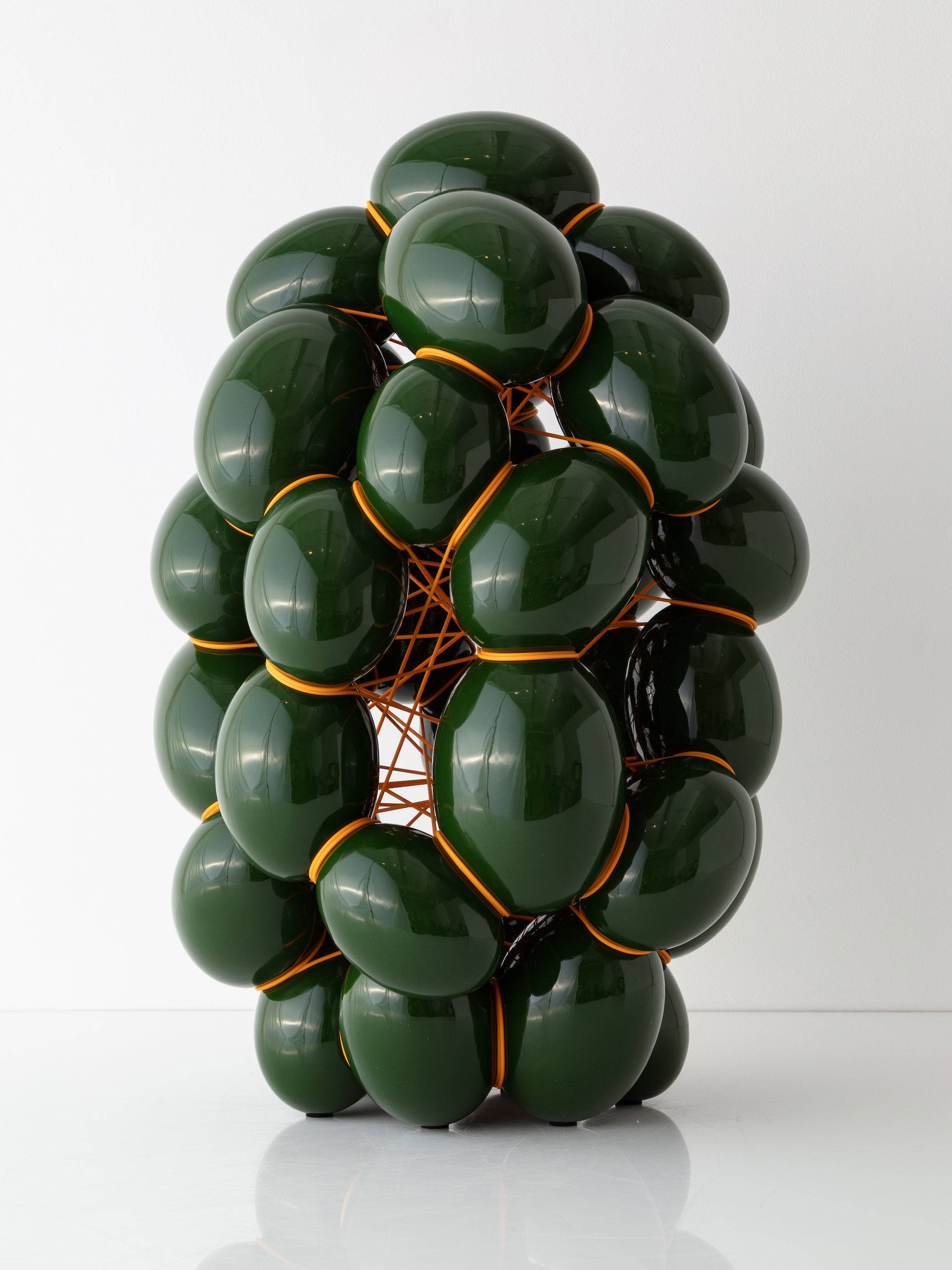How to Make It
Bend, Bubble, and Shine
New York gallery Hostler Burrows collaborates with Copenhagen Ceramics to showcase vanguard processes from Denmark
This week, New York gallery Hostler Burrows opens Bend, Bubble, and Shine, a group exhibition of contemporary vanguard ceramics from Denmark. Curated in tandem with artist collaborative Copenhagen Ceramics, the show includes the work of nine Danish studio ceramic artists, all of whom embrace bold, vibrant, experimental processes: Karen Bennicke, Morten Løbner Espersen, Steen Ipsen, Gitte Jungersen, Martin Bodilsen Kaldahl, Marianne Nielsen, Turi Heisselberg Pedersen, Pernille Pontoppidan Pedersen, and Bente Skjøttgaard.

The intriguing title references the spellbinding effects that these ceramic artists achieve. As gallery founder Juliet Burrows explains: “For me there has always been a sense of enchantment to the ceramic process, whether wrought by the artist as sorcerer, by the intensity of the kiln, or by the element of chance. Fantasy and methodology and, finally, transcendence.”
The catalogue that accompanies the exhibition offers an even deeper reflection on how to understand the objects on view in Bend, Bubble, and Shine and the uniquely Danish story behind their diverse production techniques, written by Garth Johnson, Paul Phillips & Sharon Sullivan Curator of Ceramics at Everson Museum of Art in Syracuse, New York. What follows is an excerpt from Johnson’s essay entitled Touching from a Distance.

I titled this essay Touching from a Distance in a triple nod to the depressing Joy Division records that have been spinning on my turntable during the pandemic, as well as the reality of being forced to experience three-dimensional work through phones and computer screens. Most importantly, it is a nod to the complex ways that Danish ceramists have sought to “queer” traditional notions of gesture and touch. Rarely does one see grand gestures in contemporary Danish ceramics—as in modern dance, these artists eschew Bolshoi leaps in favor of isolated Bill T. Jones movements that, while still undeniably physical, reveal more by drawing the viewer in for a closer investigation.

When it comes to the artists who are showing in Bend, Bubble, and Shine, Bente Skjøttgaard provides the loudest, clearest fulfillment of this thesis. For Skjøttgaard, it can be argued that her glazes dictate her forms rather than the reverse. A graduate of Kolding’s design program, she is perhaps best known for her work with “fat” glazes, a mutant strain of sludgy, viscous, difficult to control glazes that thickly coat whatever surface they’re applied to, often dripping and running according to (and sometimes contrary to) the laws of gravity and physics.
Skjøttgaard flips the traditional script when it comes to touch. Her work is actually ultra-tactile. Forms are improvisationally coiled from toasty brown stoneware clay and pinched using her fingers and very basic tools. Finger marks from rolling coils and joints from pinching them together are left obvious in a nod to “honest” construction. Aside from tiny peek-a-boo bits of naked clay here and there, the majority of her surface area is obscured by layered rivulets of fat glaze, which can be controlled in a limited sense by time and temperature in the kiln, but it is the high-wire act of giving actual agency to their materials that excites many contemporary artists—and that particular conceptual strategy owes a large debt to the peculiarly Danish combination of designerly deliberation and devil-may-care bravado.

Gitte Jungersen has taken the concept of glaze-as-form to even greater extremes. In perhaps the most radical rupture of Danish form fetish in history, Jungersen began a series of works entitled All is Flux in 2015. For these pieces, she created a large trough-like rectangular mold that was filled entirely with layers of glaze. In the kiln, these layers roiled, cracked, and commingled in a miniature reenactment of the metamorphic processes that shaped the Earth. The end-product is a snapshot in time—a simple rectangular shape frozen in mid-boil, the furious processes of heat and chemistry frozen in amber.
The wall-based All is Flux objects, which measured up to six feet in length are elegiac in nature—their conservative forms made even more stark by layers of ink blackness. As they lack any sort of clay substrate, they are created completely devoid of touch. Jungersen has ceded all control to her process. In the years since All is Flux, Jungersen has channeled her conceptual skills into a pas de deux between glaze and object in the kiln. Layers of shivering blue glaze peel away from their stoneware base, evoking the repulsion of peeling skin, but simultaneously attracting with pearlescent surfaces that stand in stark contrast to their base forms.

Morten Løbner Espersen has built his career on a similar cavalier disregard for form. For Espersen, the bulbous forms on display in Bend, Bubble, and Shine are positively baroque. Apart from a series of wriggling Ken Price-cum-scholar rock works entitled Horror Vacui, Espersen generally speaks through glaze—choosing straight sided cylinders or spherical moon jars as the solid foundations from which his epic glaze fantasias soar. And soar they do. For Espersen, the element of direct touch is also eradicated through the application of sizzling lava glazes in an eye-popping array of colors and micro-textures... but despite long odds, his under-stated forms and pulsating, electric glazes inevitably seem to come to an ultimate balance.

If you are lucky enough to see Bend, Bubble, and Shine in person, be ready to check your assumptions about how each artist approaches the construction and finishing of their work… Even the most casual viewer will be swept up in the diversity of materials and approaches—and this is a direct effect of the artistic ferment caused by the hothouse environment that is contemporary Danish Ceramics. ◆
You can find the exhibition catalogue and Garth Johnson’s complete essay here.
Bend, Bubble, and Shine runs from April 29 through June 10, 2021, at Hostler Burrows New York, after which it will travel to Hostler Burrows Los Angeles with dates to be announced.
